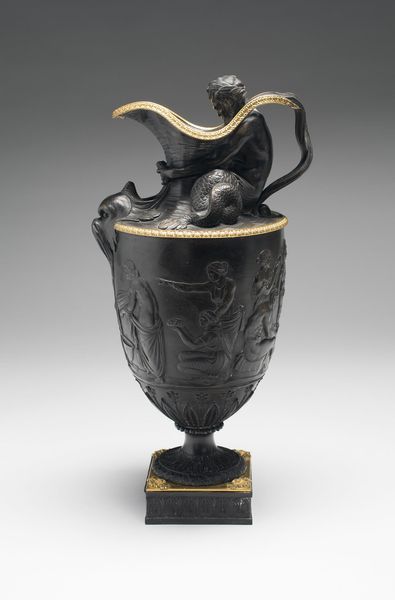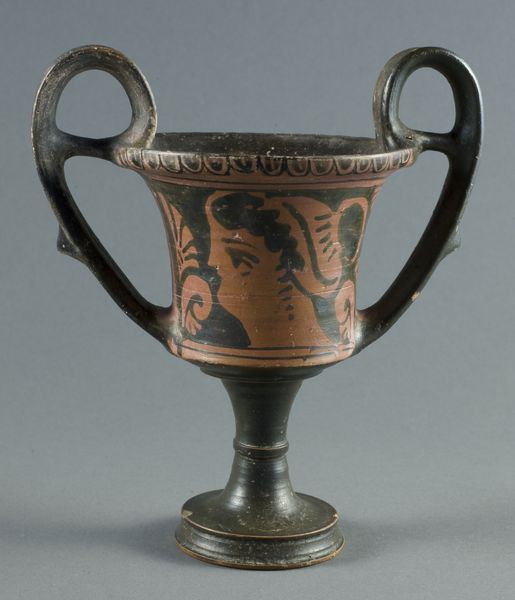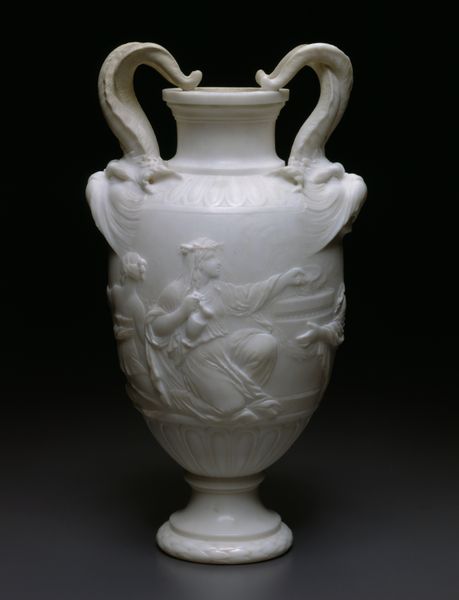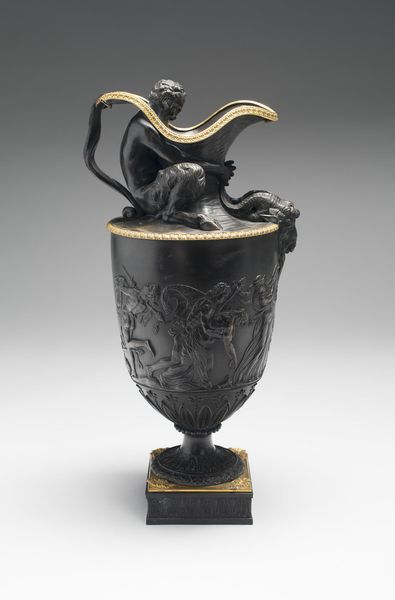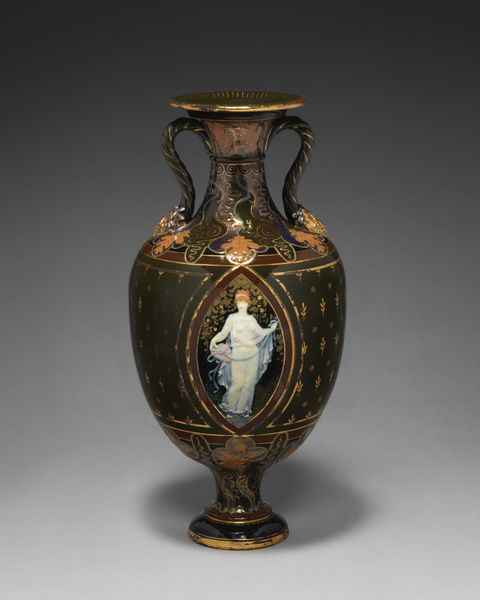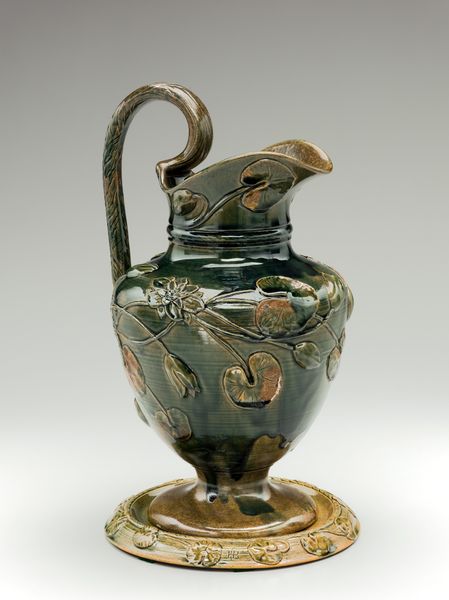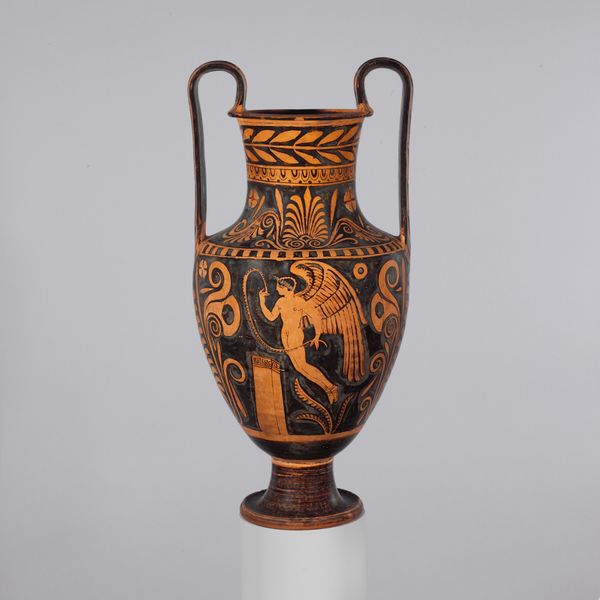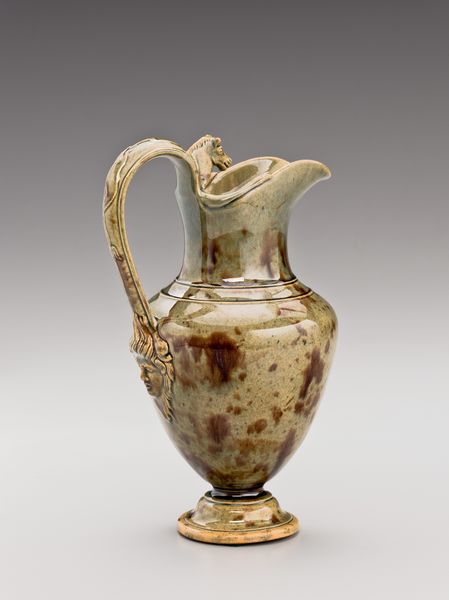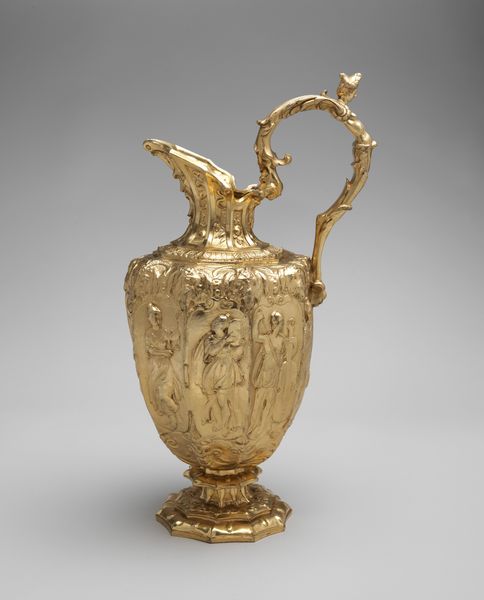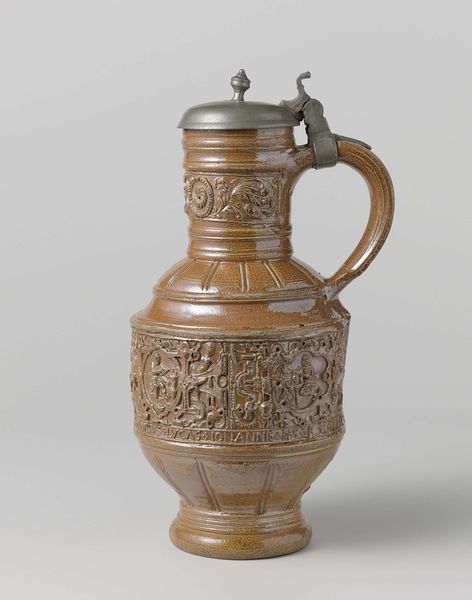
bronze, sculpture
#
bronze
#
figuration
#
ancient-mediterranean
#
sculpture
Dimensions: overall: 37.15 × 21.59 × 16.83 cm (14 5/8 × 8 1/2 × 6 5/8 in.)
Copyright: National Gallery of Art: CC0 1.0
Curator: Here we have a bronze vessel titled Vase, crafted in 1913 by Paul Manship. The form evokes ancient amphora, wouldn't you say? Editor: Immediately I am drawn to its aura of archaic mystery. The figures look frozen in mid-motion, like spirits dancing across its surface. The handles are extraordinary, like zoomorphic sentinels! Curator: Those zoomorphic handles are a clever synthesis. The avian or reptilian features, terminating in small antennae-like projections, add an exotic, almost surreal contrast to the classic vase shape. Look closely at the composition—the repeated horizontal bands provide a subtle structure. Editor: They anchor the verticality in such a clever way. For me, those spiraling bands speak to continuity and time, while the reptilian or avian features carry the symbolism of rebirth. Is this vessel depicting some ancient rite? Curator: Indeed, the imagery on the vase suggests just that. The pose of the figures is compelling. Consider how Manship uses the body to describe both tension and balance, rendered with a keen eye towards idealized anatomy, echoing ancient Greek statuary. Editor: I read those figures as evocations of Indian dance, of deities caught in ephemeral grace. Even the color of the bronze – that patinated, near-black sheen – conveys a somber depth. A vessel to communicate with other dimensions. Curator: Agreed, and I note the contrast created with the smoothness of the primary volume, which subtly enhances the embossed figure, generating depth. It’s this interplay between form and decoration which establishes the vase's visual richness and intellectual resonance. Editor: Absolutely. In its stillness, I find something unsettling and haunting, while it appears graceful, in its careful consideration, there's a lot hidden within, the bronze patina becomes a mirror, not merely reflecting our gaze, but also inviting a reflection on cultural memory and our enduring fascination with ritual, belief and myth. Curator: Your perspective illuminates how material and iconography interweave. For me, the form is where it's most potent – it reveals how timeless aesthetic principles persist through the generations. Editor: I love to delve beneath the surface to unlock and consider these potent figures frozen in time.
Comments
No comments
Be the first to comment and join the conversation on the ultimate creative platform.
